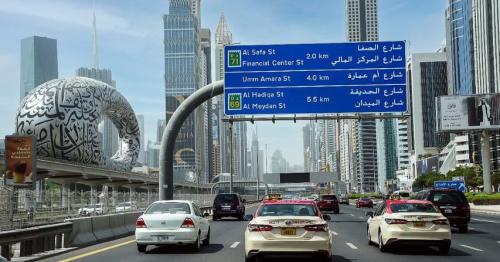Dubai: Lowering speed limits not enough to slow down drivers, study finds

As in Deira and Bur Dubai, older districts in Dubai are characterized by having dense layouts and narrow roads, which facilitate traffic moderation. This is in opposition to newer neighborhoods which are characterized by wide, open streets.
This observation summarizes the latest study conducted by the MIT (Massachusetts Institute of Technology) Senseable City Lab, which concludes that lowering speed limits by themselves is not effective in making drivers slower.
Researchers from Milan, Amsterdam, and Dubai who utilized artificial intelligence to study and analyze millions of images, and vehicle mobility data, showed that the design of the pathway in conjunction with road signs is key in influencing speed compliance.
This study also noted that there are distinctly different regions in Dubai. While older districts have features that slow traffic, newer districts lack these features and instead need to be designed and built around them.
“In regions like Deira with high density, it would be possible to refine pedestrian crossings, vehicle-pedestrian conflict zones, and overall pedestrian and vehicle-safety infrastructure, all without significant changes to road-width,” Alaa AlRadwan, Senseable City Dubai Lab Lead said. “In newer regions, it is possible to narrow road lanes while increasing the planting of street trees and truncating long sightlines.”
Last month, a conference in Milan heard the results of a recent study which found that in 30km/h zones, drivers slowed down by a mere 2 to 3km/h compared to 50km/h zones, unless the road geometry specifically required for slower speed. Yet another finding was that narrow, densely enclosed, high building density streets tend to and high building density tend to have slower traffic while wide open roads with long sightlines tend to have faster traffic.
Dubai was selected as one of three global test cities for its unique urban morphology in comparison to the wider, less dense streets of Amsterdam and Milan. In Milan, researchers analyzed over 51 million vehicle telemetry points hosted by UnipolTech, along with thousands of Google Street View images. In Amsterdam and Dubai, the model received additional and local input to further test and adjust the model to the local culture and geography.
“This is the first study of its kind in the UAE,” Mazzarello shared, noting the collaboration with the Dubai Future Foundation. Explaining the objective, she added, “We're building capabilities to assist cities in the region to redesign streets — requiring special attention in extreme climates that challenge walkability, which is already limited.”
As explained in the earlier articles, the AI model in use at the Senseable City Lab has the capability to estimate the impact of various design alterations on driver speed compliance, predicting compliance with speed limits for a wide range curb changes and tree placements long before construction, paving the way for advanced precision work.
Professor Carlo Ratti, who heads the Senseable City Lab, explains that the study “confirms” what many have suspected all along, namely that simply changing the number on a speed sign is not sufficient: “As a concept, this has been known for a while. Only now, with the advent of AI, can we do this in a quantitative way.”






Comments